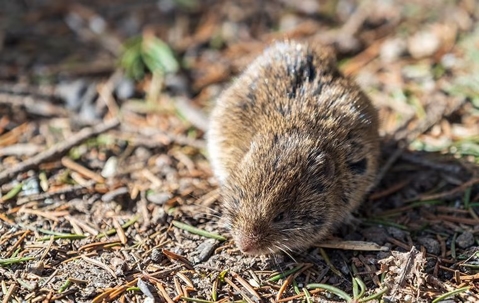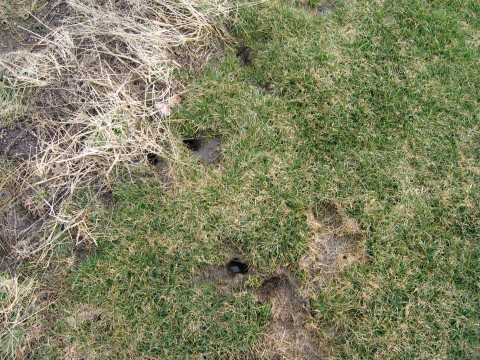Comprehensive Guide to Reliable Vole Pest Control: Problem Recognition and Therapy Approaches
In the world of reliable insect control, vole problems posture a distinct challenge that requires a critical technique. These tiny rodents, typically mistaken for computer mice, can wreak chaos on gardens, grass, and plants if left unchecked. Recognizing the indicators of vole visibility and implementing targeted therapy techniques are vital components of a successful parasite monitoring plan. By exploring the subtleties of vole habits, understanding vital signs of invasion, and examining a variety of control choices, one can develop a comprehensive approach to fight these elusive bugs.
Understanding Vole Behavior
Vole actions is characterized by their tunneling habits and quick reproduction rates, making them a tough pest to control properly. These small rodents commonly develop elaborate tunnel systems underground, utilizing them for sanctuary, food storage, and transport. Voles are herbivores, eating a range of plants, grasses, bulbs, and roots, which can trigger significant damage to yards, orchards, and yards. Their fast reproductive price additional complicates control initiatives, with women with the ability of generating several clutters in a solitary year, each including several offspring.
Understanding vole actions is important for effective parasite control techniques. By identifying their burrow areas, checking feeding locations, and implementing targeted control techniques, such as trapping or environment adjustment, vole infestations can be taken care of successfully.
Indications of Vole Invasion

Prevention Approaches
Applying efficient avoidance strategies is essential in minimizing vole infestations and securing plant life from their destructive feeding practices (vole pest control). To stop vole problems, it is necessary to begin by getting rid of possible food sources and shelter. Keep grass and plant life cut short, eliminate weeds and particles, and maintain a neat yard or lawn to make the location much less appealing to voles. Setting up obstacles such as equipment towel or below ground fence can also help deter voles from getting in certain areas. In addition, lowering excess moisture by repairing dripping pipelines and making certain proper drainage can make the environment much less congenial for voles.
Regularly inspecting the property for indications of vole activity, such as paths and tunnel openings, is essential for early discovery and prompt action. If vole activity is suspected, take into consideration making use of repellents or traps tactically placed near their paths.
Non-Lethal Control Methods
To successfully handle vole populaces while focusing on humane approaches, non-lethal control strategies supply practical services for decreasing vole damages in yards and landscapes. One effective technique is making use of physical obstacles such as equipment towel or cable mesh to secure prone plants. These barriers can be buried at least 12 inches deep and bent at a 90-degree angle to avoid voles from delving beneath. Furthermore, habitat modification have a peek here can discourage voles by minimizing their favored food sources and hiding areas. Preserving a well-mowed yard, getting rid of debris, and keeping vegetation trimmed can make the atmosphere less attractive to voles.

Lethal Control Options
One effective method for resolving vole infestations in gardens and landscapes includes the strategic usage of dangerous control alternatives. When faced with a serious vole infestation that non-lethal methods have actually fallen short to contain, executing lethal control measures comes to be critical. On the whole, when utilizing lethal control alternatives, it is necessary to do so sensibly and in accordance with local regulations to properly handle vole infestations.
Conclusion
In verdict, efficient vole pest control calls for a comprehensive understanding of vole actions, recognition of indicators of invasion, execution of prevention strategies, and use of both dangerous and non-lethal control methods. By incorporating these approaches, people can effectively handle vole populations and secure their residential property from damage. It is crucial to address vole invasions visit our website immediately to stop additional concerns and minimize the effect on the surrounding setting.
Given the elaborate passage systems and quick reproduction rates particular of voles, identifying the signs of vole invasion comes to be important in reliable parasite control. One of the primary signs of vole visibility is the visibility of surface runways or tracks in yard or snow, generally regarding 1-2 inches large, developed as voles travel between their burrows and food sources.To successfully take care of vole populaces while prioritizing humane techniques, non-lethal control methods offer practical options for lowering vole damages in gardens and landscapes.One efficient approach for dealing with vole infestations in gardens and landscapes includes next page the calculated usage of deadly control choices. vole pest control.In verdict, effective vole insect control needs a detailed understanding of vole habits, identification of indications of invasion, application of prevention techniques, and usage of both deadly and non-lethal control methods